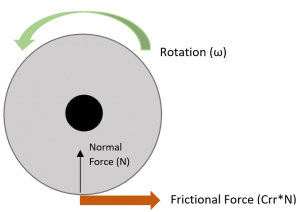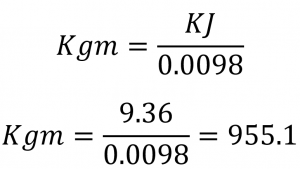As exercise trends changed over recent years, the kinds of workouts individuals do have also changed. Trends like circuit workouts, high intensity interval training (HIIT), or most recently Crossfit have influenced the types of workouts people do because of the results each claim to give.Essentially these workouts can be put into two categories: Traditional or Functional workouts.
Traditional workouts or traditional strength workouts are those that use resistance training principles. These workouts are what typical gym-goers think of as “leg day” or “arm day”. They include isolating a specific group of muscles and lifting weights to maximize muscle strength usually including exercises like arm curls, leg presses, dip machines, etc. On the other hand, Functional workouts include a wide variety of exercises that mimic movements that the individual experiences in activities for daily living. A typical functional workout is harder to define since it is so subjective to the individual. For example, a functional workout for a softball player is going to be completely different from a functional workout for a dancer.
Intuitively you would think that each type of workout out would produce different results. A traditional strength workout would increase a person’s strength while not really affecting other systems. While a functional workout would not increase a person’s strength as much and would increase their efficiency for activities faster. But what does the research really say?
First let’s look at how each workout affects aspects of the other. The article “The Effects of Resistance Training on Endurance Distance Running Performance Among Highly Trained Runners” looked to study how traditional strength workouts affects the functional running performance in runners. After a systematic review of articles, they found that resistance training has a positive effect on running pefromance [1]. This means that resistance training can be beneficial for functional activities. Another study looked at the adaptations of resistance circuit training compared to traditional strength training in resistance-trained men. It could be argued that circuit training is a form of functional training for this population and thus the study is looking at how a functional workout affects strength performance. The study found that the one rep max (1RM) increased equally for both training protocols and that circuit training was as effective as traditional strength training in improving weight lifting [2]. Interestingly each type of workout has positive effects on each other. A functional workout can improve strength abilities while traditional strength workouts can help with functional activities.
But what if the two workouts are compared to each other?
In “Functional vs. Strength Training in Adults” 101 middle aged subjects were divided into two groups (functional and strength training) that each performed 24 sessions of a training protocol twice a week. Each subject was assessed pre- and post-intervention using Y-balance test and a Functional Movement Screen. The results showed that there were no differences in improvement between the training protocols, however functional training was less effective for women compared to men in the same group [3]. when looking at the anthropometric and motor effects of functional vs. traditional resistance training in the Tomlijanovic et al. study, there was no statistical difference between either of the anthropometric measures or the motor status variables after a five week training program [4]. There were only minor improvements in each training program that did not affect the overall results, this could have been due to the short amount of training time. Even when comparing the two workouts to each other in a non-exercise application a similar trend appears. In the study Christine Stutz-Doyle, a traditional strength workout and a functional workout were compared to study their effects on pain, strength, and functional mobility in elderly subjects with Knee osteoarthritis in hopes to improve the subjects quality of life. Interestingly there was no statistical difference in muscle strength, pain and stiffness between the two groups Although the functional workout group did increases gait velocity by the end of the study which could be attributed to the task specific training [5].
In conclusion, the gathered research states that there is no statistical difference between functional and traditional strength workouts. The results that you are going to experience from doing either are going to be relatively the same, which is rather interesting. So it is really up to personal preference of which workout you would prefer doing. Of course, it is incredibly difficult to standardize functional workouts across studies and even within studies it is difficult to control for the types of movements. A more expansive review of research studies might prove these results otherwise.
Further Readings:
- Yamamoto LM, Lopez RM, Klau JF, et al. “The Effects of Resistance Training on Endurance Distance Running Performance Among Highly Trained Runners: A Systematic Review”. Journal of Strength and Conditioning Research. 2008; 22(6): 2036-2044. DOI: 10.1519/JSC.0b013e318185f2f0.
- Alcaraz PE, Perez-Gomez J, Chavarrias M, et al. “Similarity in Adaptations to High-Resistance Circuit vs. Traditional Strength Training in Resistance-Trained Men”. Journal of Strength and Conditioning Research. 2011; 25(9):2519-27.
- Matheus Pacheco, Luis Teixeira, Emerson Franchini, et al. “Functional vs. Strength Training in Adults: Specific Needs Define the Best Intervention”. International Journal of Sports Physical Therapy. 2013; 8(1): 34-43.
- Tomljanovic M, Spasic M, Gabrilo G, et al. “Effects of Five Weeks of Functional vs. Traditional Resistance Training on Anthropometric and Motor Performance Variables”. Kinesiology. 2011; 43(2): 145-154.
- Stutz-Doyle, Christine. “The Effects of Traditional Strengthening Exercises Versus Functional Task Training on Pain, Strength, and Functional Mobility in the 45-65 Year Old Adult with Knee Osteoarthritis”. Seton Hall University Dissertations and Thesis (ETDs). Paper 98. 2011.










